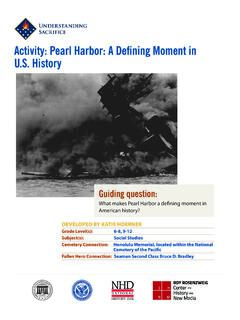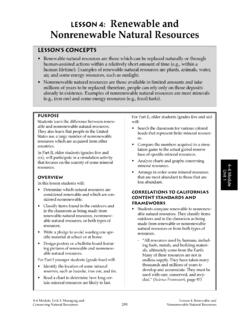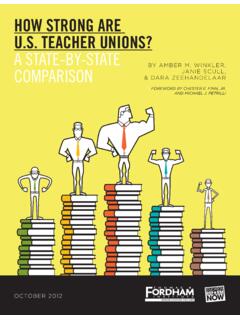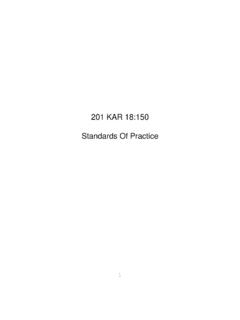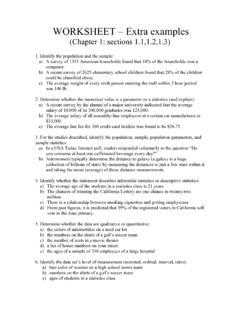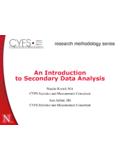Transcription of NC Civic Education Consortium - CES at UNC
1 Introduction to the European Union Overview This lesson serves as an introduction to the European Union and many of the countries that are part of the European Union. Students will independently learn about the history, institutions, and policies of the European Union through a webquest. As a culminating activity, students will research an EU. member country to create a travel brochure and jingle that will educate their classmates about the various EU member countries. grade 9. NC Essential Standards for World History : Evaluate global wars in terms of how they challenged political and economic power structures and gave rise to new balances of power.
2 : Analyze the new balance of power and the search for peace and stability in terms of how each has influenced global interactions since the last half of the twentieth century. Materials Chart paper European Union Webquest Handout (attached). Computers with Internet Access (preferably one for each student, but students can share if computers are limited). EU Tourism Project Handout (attached). Paper for brochures Crayons, markers, pens, colored pencils, crayons. Countdown Timer for the brochure jigsaw activity. Free timers are available at: o Printer (optional).
3 Essential Questions: What is the European Union? Why was the European Union created? What is the purpose of the European Union? What institutions make up the European Union? What countries make up the European Union? Duration 90+ minutes (activities can be split over two days). Student Preparation Students should have already studied World War I, World War II, and the Cold War before completing this lesson. NC Civic Education Consortium 1. Visit our Database of K-12 Resources at Teacher Preparation Although the webquest answer key is attached, teachers should take time to complete the webquest before assigning it to students so they can familiarize themselves with the European Union and to ensure that the links are not blocked by the school's network administrators.
4 All links were active as of May 2012, but teachers should also ensure this is the case on the date the lesson is administered. The ongoing Eurozone Debt Crisis or Euro Crisis is not addressed in this lesson. For more information about the Eurozone Debt crisis, see the Consortium 's lesson An Overview of the EU, Eurozone, and the European Debt Crisis , available in the Consortium 's Database of K 12. Resources or by e mailing Procedure Warm Up: European Union KWL Chart 1. As a warm up, write the word European Union on the board or on a piece of chart paper.
5 Underneath European Union create a Know Want to Know Learned (KWL) Chart. Instruct students to silently brainstorm what they know and what they would like to know about the European Union. 2. After allowing students time to brainstorm, solicit responses for the column What do you know about the EU and record them. Next, ask students what they want to know about European Union and record it in the appropriate column. Save the KWL chart to refer to throughout the lesson. Overview of the European Union Webquest 3. The webquest activity is designed to be entirely student led.
6 Before allowing students to work on their Overview of the European Union Webquest review the following instructions: To answer the questions, visit the websites provided in the gray boxes above each section. Feel free to visit any of the additional links at the end or various parts of the site that may interest you, but be sure to answer all of the webquest questions first before exploring on your own. 4. Assign students a computer and provide students with enough time to complete their webquests. As students are working, circulate throughout the room to answer questions and to ensure that students are staying on task.
7 5. At the conclusion of the webquest, return to the KWL chart from the warm up and solicit student responses to fill in the what they learned column. Ask students to review the what they know column and correct any previous misconceptions or incorrect information listed. 6. Review the webquest as a class using the attached answer key. If the teacher elects to assign the extra credit assignments, allow students to share their responses. Discuss the questions below to debrief the webquest: How did World War II and the Cold War help lead to the creation of the EU?
8 What are some benefits of joining the EU? What are some drawbacks of joining the EU? What is codecision ? NC Civic Education Consortium 2. Visit our Database of K-12 Resources at o This means that the directly elected European Parliament has to approve EU legislation together with the Council (the governments of the 27 EU countries). What is the Eurozone and how is it different from the EU? o Eurozone refers to the countries that adopted the Euro as their currency. The EU refers to the political organization that countries belong to. Not EU members are members of the Eurozone (United Kingdom, for example).
9 Teacher Notes: Depending on the availability of computers and/or size of the class, the webquest activity can be completed individually or in pairs. Although two class periods are recommended for the lesson, the webquest can be given to students to complete at home, while devoting class time to the EU Tourism Project . It is up to the discretion of the teacher to decide if students should complete the sections of the webquest labeled extra credit . Visiting the EU Create a Travel Brochure 7. Before dividing students into groups, explain to them that they are going to be learning about the individual countries that make up the European Union by creating a brochure and a jingle that will serve two purposes: 1) to educate their classmates about their assigned country and 2) to urge people to want to visit their assigned country.
10 Distribute the attached EU Tourism Project'. handout, assign a due date, and review the instructions. Answer any questions about the project before moving on. 8. Divide students into groups of 2 4, provide them with a computer that has internet access, and assign them one of the following EU countries: Germany Greece United Kingdom Czech Republic France Sweden Netherlands Ireland Poland Italy Spain Hungary Depending on the size of the class, the following additional countries can be assigned: Austria Lithuania Belgium Luxembourg Bulgaria Malta Cyprus Portugal Denmark Romania Estonia Slovakia Finland Slovenia Latvia 9.

